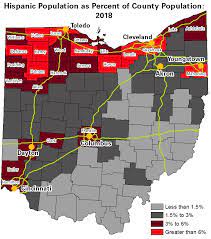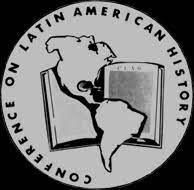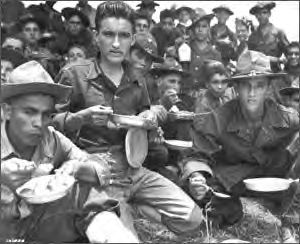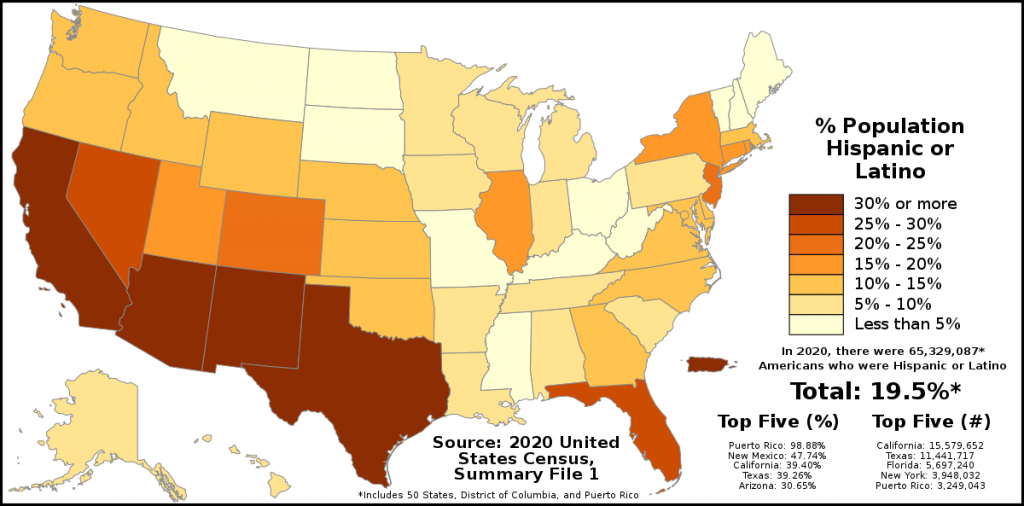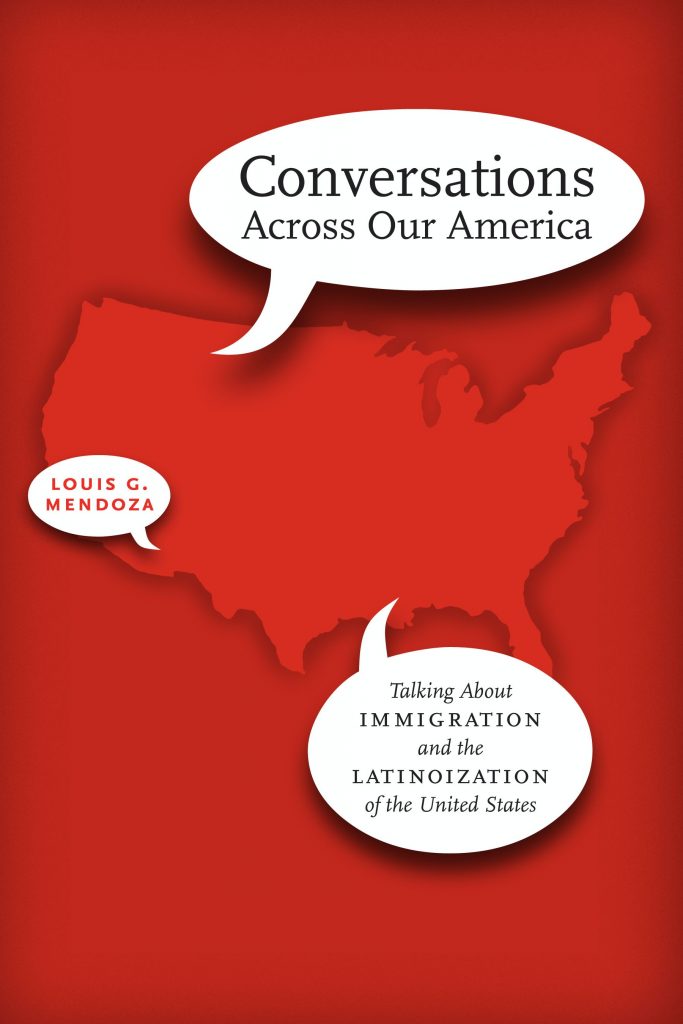Week 1
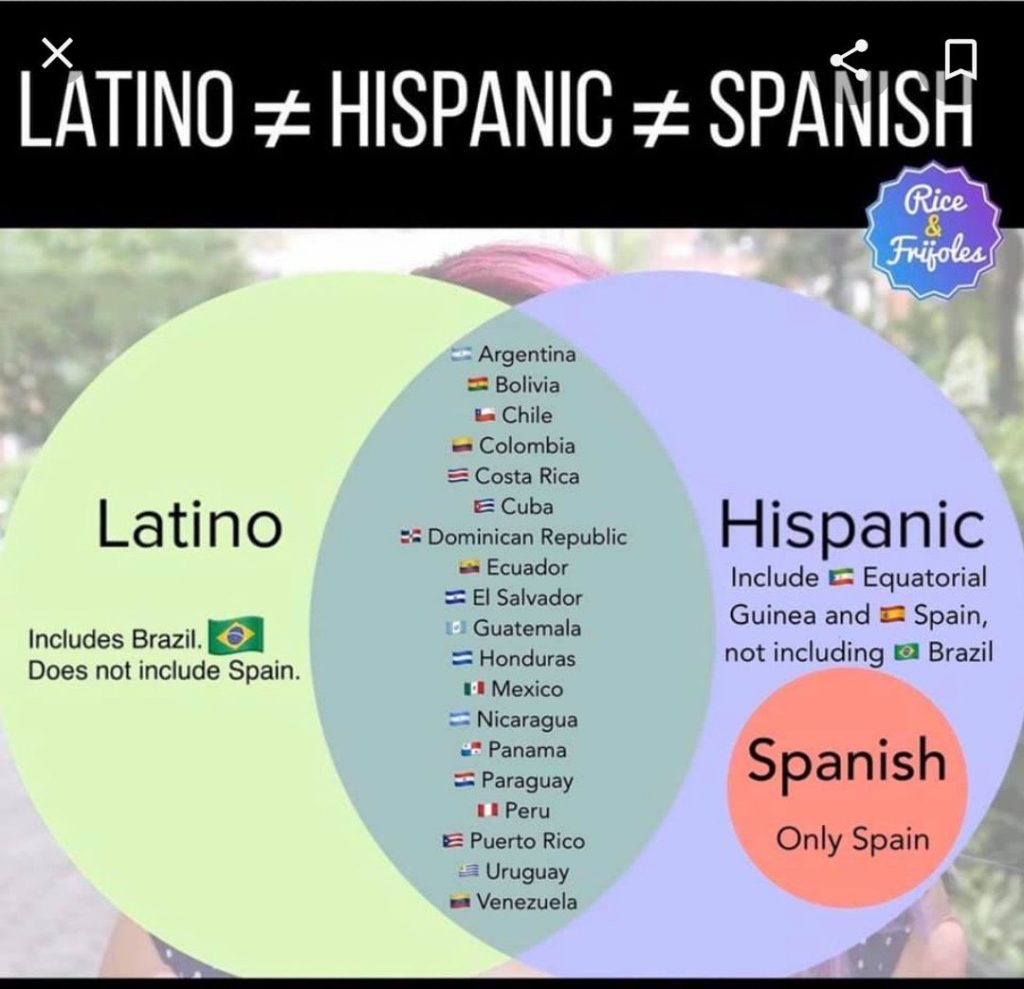
Introductions
Day
Before class
Think about
W 1/11
Introductions
- Read our syllabus & come prepared with questions.
- “What Does it Mean to Think Historically?” Perspectives
- Fill out the confidential student information form.
- Complete our class projects setup checklist.
- What are your goals in taking this class?
- What will you do to achieve those goals?
- How might your identity or lived experiences shape your engagement with our course themes? Your interactions with classmates?
F 1/13
Integrating Latino Histories
- Ramón A. Gutiérrez “What’s in a Name?” New Latino Studies Reader
- PEW Research “Who is Hispanic?”
- Homework #1: Forum Post
- What is the difference between Hispanic, Latino, and Latinx? How and why are these categories defined? Why is this important to understand?
- How and why do the introductions presented by Pew and Gutiérrez differ?
f 1/13
7:30pm
Caged
- Freelander Theater
- 1 hour (wear masks)
- Earn a bonus token (worth a free 48 hour homework extension) by attending this play.
Week 2
Day
Before class
Think about
W 1/18
Historical Methods
- Thomas Andrews “What does it mean to think historically?”
- National Council on Public History “Evidence of the Past”
- Click through to read “The Changing Past” and “The Contested Past.”
- Nathan Yau “Useless Points of Comparison“
- Evaluating Wikipedia
- What does it mean to think like a historian? What kinds of questions do we ask? What kinds of evidence do we consider?
- How do historians use quantitative information?
- What are Wikipedia’s rules about content and use of evidence?
F 1/20
Immigration Historiography
- Mae Ngai “Immigration & Ethnic History” from American History Now
- Wikipedia “What is a Content Gap?”
- Homework #2: Quiz
- According to Dr. Ngai, what are the key questions in immigration and ethnic history? How and why have these changed over time?
- What political purposes are served by different approaches to teaching about U.S. history? What does the discomfort surrounding this subject reveal about the present?
Week 3
Day
Before class
Think about
M 1/23
Spanish Borderlands
- Juan González “The Spanish Borderlands & the Making of an Empire” from Harvest of Empire
- By Friday, complete the Week 3 Wikipedia training exercises.
- What is important to know about longer historical context for the (now) US Southwest?
- What do historians mean when they talk about “Borderlands”?
W 1/25
U.S. Immigration History
- Portes & Rumbaut “Three Phases of U.S. Immigration History” from Immigrant America
- “Timeline” Immigration History
- How and why have U.S. immigration policies changed over time?
- How have changes in the global labor market shaped migration to the U.S.? Global politics?
F 1/27
Mexican, Cuban & Puerto Rican Patterns of Migration
- González “Puerto Ricans“
- González “Mexicans: Pioneers of a Different Type“
- González “Cubans: Special Refugees“
- Homework #3: Quiz
- What political, social, and economic factors contribute to the 20th century migration of Puerto Ricans, Cubans, and Mexicans to the United States?
Week 4
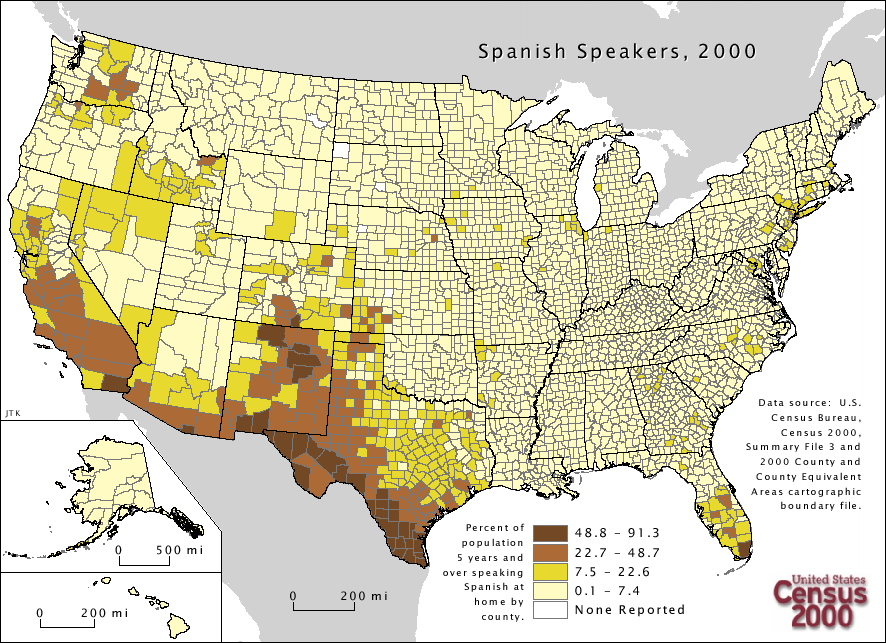
Thinking Quantitatively
Day
Before class
Think about
M 1/30
Intro to Statistics
Online Stat Book: The same material is covered in the video and the transcript – pick which is more engaging for your learning.
- “What Are Statistics?” 4 minute video or transcript
- “Importance of Statistics” 2:44 video or transcript
- “Descriptive Statistics” 3:30 video or transcript
- “Inferential Statistics” 6:30 video or transcript
- PEW “Methods 101: Random Sampling” (2:26)
- Lemercier “Sources & Samples” Quantitative Methods in the Humanities (stop reading @ page 43)
- What are statistics, and why are they useful?
- What are some common ways in which quantitative evidence can be misleading?
- What is the difference between descriptive and inferential statistics?
- How do historians like Lemercier approach quantifying the past for statistical study?
W 2/1
Types of Data
- Unit Quiz #1 Study Guide
- Costello “Basic Data Types” from Data + Design
- Croll “About Data Aggregation” from Data + Design
- Homework #4 Quiz
- What are the most important categories statisticians use to divide data into categories?
- Why is it important to distinguish between numeric and categorical data?
- How can we distinguish between raw data and aggregate data? Why is this important?
F 2/3
How to read a spreadsheet
- Kevin Stratvert “Excel Tutorial for Beginners” (watch from “Navigating the Home Screen” to “Tables” (about 18 total minutes: from 4:30 to 23:50)
- Homework #5: Quiz
- How do spreadsheet editors like Excel help you organize and analyze information?
- When creating our database, what are best practices for categorizing and recording information?
Week 5
Creating our Dataset
Day
Before class
Think about
M 2/6
Latino Histories in the National Archive
- Unit Quiz #1 at the start of class (25 mins)
- PAMA Archives “Why Don’t Archivists Digitize Everything?“
- National Archives Statement on Potentially Harmful Content
- What choices are involved in setting up an archive? in deciding what materials to digitize?
- How do archives reflect the priorities of societies that create them?
W 2/8
Quantifying 1940s Alien Registration Forms
- Julian Encina Alien Registration Form (4 pages)
- Elizabeth Burnes “1940 Alien Registration” History Hub
- Lemercier “From Source to Data” Quantitative Methods in the Humanities
- Du Solei “Getting Data Ready for Cleaning” from Data + Design
- Homework #6 Forum Post
- Take some time to examine the information requested in this 4 page form. What does it reveal about the priorities of the U.S. government?
- What types of information would you find most interesting to extract to create a dataset for our “collective biography” of the men who completed these forms?
- What kind of contextual information is missing?
F 2/10
Workshop: Creating our dataset
Make sure to bring your laptop today!
- Tebbutt “Data Checks” from Data + Design
- Intro: Spanish Surnames
- Click here to see your 5 assigned record sets.
- Here is the link to all of the scanned records.
- Homework #7 Upload your spreadsheet before class (strict deadline!)
- How should we set up our spreadsheet? What formatting do we need to include? What do we need in our codebook?
- What pieces of information are most important for us to capture as we examine these registration cards?
SAT 2/11
Upload Dataset Peer Review
- Homework #8: By the end of the day, upload the ten records you peer reviewed as a single .xlsx file.
- Make sure to highlight any corrections you made in red.
- How can you apply Tebbutt’s lessons on the importance of data checks to your work creating our dataset?
Week 6
Day
Before class
Think about
M 2/13
Frequency Distributions
- Jim Frost, “Frequency Tables“
- Jim Frost, “Relative Frequencies and their Distributions“
- StatQuest “Histograms” (3 mins)
- By the end of the Tuesday: Self-evaluation of participation #1
- What historical questions can we ask about our dataset using frequency tables?
- What kinds of “bins” make sense for our data?
W 2/15
Summarizing Data: Central Tendencies
- Jim Frost “Measures of Central Tendency” from Statistics by Jim
- Jim Frost, “Measures of Variability: Range, Interquartile Range, Variance, and Standard Deviation“
- Jim Frost, “Interquartile Range“
- Alex Velez, “What is a Box Plot?” Storytelling with Data
- “Skewness & the Mean, Median, & Mode“
- How can we use measures of central tendency to describe a data set?
- What is the difference between mean, median, and mode?
- Why is important to consider the distribution within your data set?
F 2/17
Work Day: Bar Charts & Histograms
- Make sure to bring your laptop!
- Alex Velez, “Differences between Histograms & Bar Charts” Storytelling with Data
- Microsoft “Create a Chart from Start to Finish“
- Homework #9: Quiz
- For your the bar chart or histogram component of your El Paso Data Visualization Assignment, what historical question are you asking?
- What is the larger significance of this question?
Week 7
Day
Before class
Think about
M 2/20
Relationships between variables
- Alez Velez “What is a Table” Storytelling with Data
- Jim Frost, “Scatterplots“
- Jim Frost, “Chi-Squared Test of Independence“
- Jim Frost, “How Hypothesis Tests Work”
- “Introduction to Bivariate Data” 5 minute Video or text
- What is bivariate data?
- What variables in our sample dataset does it make sense to examine in relationship with each other? What kinds of relationships don’t make sense to examine together?
- What exactly is a p-value, and why is it important?
W 2/22
Creating Effective Data Visualizations
- Cole Nussbaumer Knaflic “Choosing an Effective Visual” Storytelling with Data
- Djukic “Perception Deception” Data + Design
- How can we use simple graphic design strategies to communicate our ideas more effectively?
F 2/24
Work Day: Creating Your Pivot Table
- Quick Intro to Using Pivot Tables in Excel (20 minutes)
- Cole Nussbaumer Knaflic “Focusing Your Audience’s Attention” Storytelling with Data
- Homework #10: Forum Post
- What two variables will you explore from our El Paso Dataset? Why does it make sense to look at these together?
Week 8
Day
Before class
Think about
M 2/27
Showcase: Data Visualizations
El Paso Data Visualizations Due
- Upload your two data visualizations + project memo to Moodle.
- Share one visualization to our Google Slideshow (linked from Moodle)
- Sign up for your Wikipedia Article – let me know ASAP if you have a different article!
- Come prepared to talk about your research question, the statistical analysis you performed, and how you’re using graphic design to strengthen your communication.
- Unit Quiz 2 Study Guide
W 3/1
Immigration Coverage on Wikipedia
- How would you evaluate Wikipedia’s coverage of immigration? Looking at your chosen article, does it meet Wikipedia’s standards for balance, content, and use of evidence?
- Why is it important to improve coverage of immigration on Wikipedia?
F 3/3
Research REsources: Quantitative History
- bring your laptops for this hands-on workshop!
- American Community Survey Information Guide
- ACS “Why We Ask Each Question“
- How can you use specialized resources available through our library to find high-quality secondary sources?
- What information does the Census Bureau Collect and make available for researchers? Why?
Week 9
Day
Before class
Think about
M 3/6
Unit Quiz #2
- What of your accomplishments so far this semester are you most proud of? Why?
W 3/8
Workshop: Using Census Microdata
- What is microdata? How and why does the U.S. census bureau collect this information in the American Community Survey Information Guide?
- What ACS data might you investigate for your final research project? How can this 21st century data give you insight into your historical question?
- What region, population, or national origin group might you investigate? Why?
F 3/10
Project Work Day
- Come prepared with questions about our next projects: Wikipedia or the ACS research project.
Spring Break!
Week 10
Day
Before class
Think about
M 3/27
Work Day: Final Project Planning
- Spend today’s class time thinking about your focused question for your final project. For today’s forum post (due by 5pm Monday), you’re sharing your question + some source ideas.
By 5pm Monday:
- What sources will you use for your prospectus? This is a chance to share your ideas with me BEFORE you go further with your analysis.
W 3/29
Mapping Ethnicities with US Census Tools
- Alejandro Portes & Rubén Rumbaut “Moving: Patterns of Immigrant Settlement and Spatial Mobility” from Immigrant America
- Passel, Lopez, and Cohn, “U.S. Hispanic population continued its geographic spread in the 2010s” PEW Research 3 February 2022
- Data Gem: How to Visualize Your Data Using Thematic Maps
OPTIONAL Extra Credit:
- Watch this 16 minute video of me making a map with the Census Bureau’s Data Exploration Tool
- Create a map related to your final research project and share it to Moodle by 9am to earn 10 points of extra credit.
- Drawing on the Portes & Rumbaut reading, what factors influence where different Latino immigrant groups settle in the U.S.?
- How have these patterns changed over time?
- How can we use information in the U.S. census mapping tools to visualize these patterns of settlement?
- How does the scale (county level, state level, region level) shape the stories told in these maps?
F 3/31
Wikipedia Showcase
- Complete all work on your Wikipedia article.
- Upload your Wikipedia project memo
- Share to our Wikipedia Showcase Slideshow
- How did your work improve the quality of immigration information available on Wikipedia?
- How does your work demonstrate your quantitative literacy? Your understanding of immigration history?
Week 11
Contemporary Immigrant Stories
NOTE: UPDATED on 3/29 to give us time for an additional hands-on workshop with the ACS microdata.
Day
Before class
Think about
M 4/3
ACS Microdata Workshop
Bring your laptop to class for this hands-on workshop!
- Watch this short video on how to customize variables in the American Community Survey.
- Go to www.census.gov/mdat/ and spend 30 minutes experimenting with customizing variables for your project.
- How might you recode ACS variables to better get at your historical question?
W 4/5
Pecha Kucha Planning Workshop
- Prospectus due
- Read about Pecha Kucha
- What characterizes an effective oral presentation?
- How can you use your presentation to demonstrate your skills of quantitative literacy and effective communication?
F 4/7
Documentary: The Wall
- How do these 5 documentary filmmakers present evidence to make an argument about immigration?
Week 12
Day
Before class
Think about
M 4/10
Data Viz Peer Review
- Coale “Importance of Color, Font, & Icons” Data + Design
- Homework #14: Data Visualizations Peer Review
- Upload your drafts any time before class (strict deadline)
- Need Help? Intro to Moodle’s Workshop Activity
- We’ll devote today’s class to peer review.
- How effective are your peers’ data visualizations? What suggestions do you have as they revise and strengthen their work?
- Complete all peer review work by midnight (this counts as HW #15).
W 4/12
Language & Identities
- Alejandro Portes and Rubén Rumbaut “Language, Diversity, & Resilience” from Immigrant America
- What do we know about language diversity in the United States?
- How have the % of folks who speak a language other than English changed over time? Why might this matter (or not)?
F 4/14
Pecha Kucha Work Day
2 Data Viz + Project Memos Due
- Bring your computer, a printout of your completed pecha kucha worksheet, and ideas/images for your power point slides.
- Pecha Kucha Planning Worksheet
- In addition to your data visualizations, what kinds of images will help reinforce your key message in your pecha kucha?
- How can we apply the visual & QL communication strategies we’ve discussed this semester to your power point design?
Week 13
Student Research
Day
Before class
Discussion
M 4/17
Latinos in the New South
- Nuestro South Podcast: “Loud & Proud: Where ‘Juan Crow’ meets Pedro Crow” 1 hour 20 minutes – interview with Dr. Cecilia Márquez
- What roles did Latinos play in the Civil Rights Movement in the U.S. south?
- What types of evidence does Dr. Márquez present?
- How does the format of this podcast shape the history presented?
W 4/19
Presentations Day 1: Economics
- Julia “Generational Wealth Among Salvadoran Families in the DC Area“
- Alena “Gentrification in Los Angeles“
- Caleb “Latino Poverty“
- Michael “Education & Income among Cuban & Mexican Americans“
- Clare “Latino Health Insurance Enrollment in California“
- Taylor “The Gender Wage Gap among Latino Communities in Texas“
- If it is not your day to present, post two specific, thoughtful discussion questions before class.
F 4/21
I.S. Symposium!
- How does our work this semester help you better understand quantitative senior research projects?
Week 14
Student Research Presentations
Videos are linked below, or you can see the full class presentation stream channel here.
Day
Before class
Discussion
M 4/24
Presentations Day 2
UPDATED: Now for W 4/26
- Matthew “Latino Naturalization since 1991“
- Coco “Is Texas Biased in Hiring Mexican Immigrants?
- Louie “Cuban Education Levels in Florida“
- Mali “Citizenship & Disability“
- Nina “Disability & Immigration“
- Ryann “Education & Immigration History“
- If it is not your day to present, post two specific, thoughtful discussion questions before class.
W 4/26
Presentations Day 3
- Aidan “Latino Vetrans“
- Carmen “Educational Attainment in Colorado”
- Joey “Hispanic Employment & Education in Kentucky“
- Maura “Latino Educational Attainment in Pennsylvania”
- Eva
- Kareem “Generational Wealth of Puerto Rican Families“
- Melanie “Barriers to Education: Michigan Latinos“
- If it is not your day to present, share two specific, thoughtful discussion questions before class.
F 4/28
Presentations Day 4
- Naz
- Snake “Parental & Marital Status among Latinas in CA & Texas“
- Yoshi “Income Gap: Puerto Rico & the US“
- Madison “Farming in Latino & Hispanic Origin Groups & Citizenship Status“
- Ian
- Jade
- If it is not your day to present, post two specific, thoughtful discussion questions before today’s class.
Week 15
Day
Before class
Think about
M 5/1
Latino Communities Today
Exam Review Session
Bring your laptops for course evaluations
- What are the most important things you’ve learned this semester?
- How will you apply this knowledge moving forward?
Final Exam: Tuesday, May 9 8:00am to 10:30am
- Upload your take-home final exam to Moodle no later than 8am
- Meet in our regular classroom for student presentation Q&A and to celebrate your amazing research!
